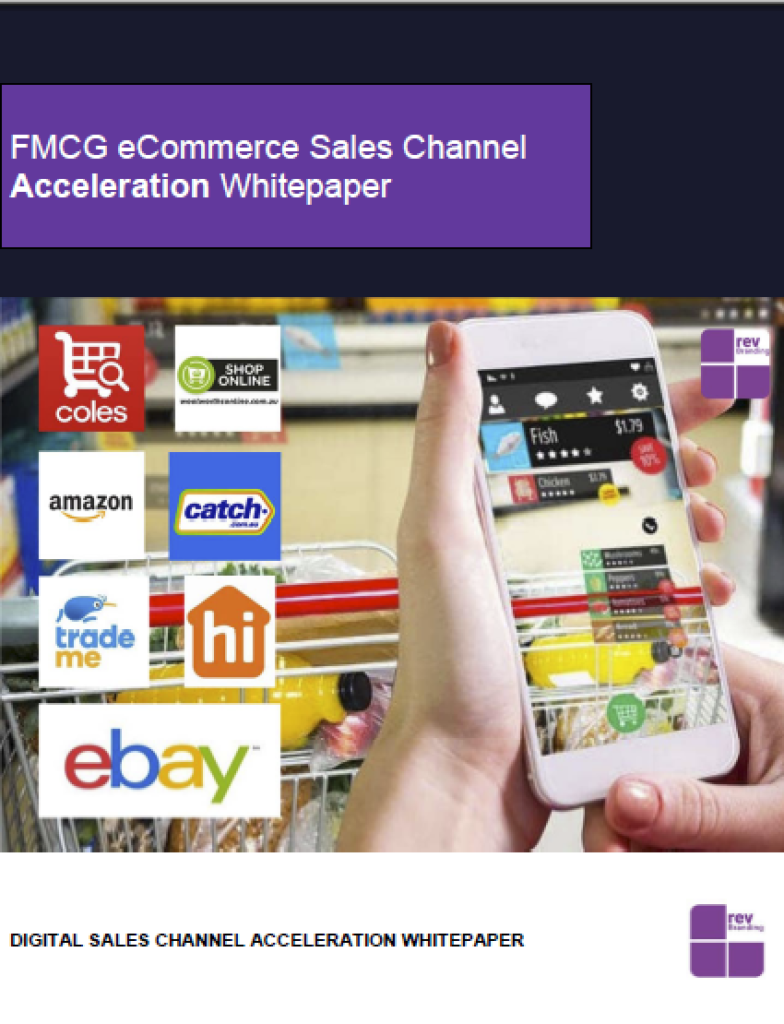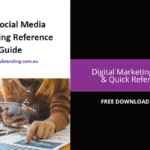How to Sell Products Using eCommerce Marketplaces
Your how-to guide to selling on the top Australian eMarketplaces such as Amazon, eBay, Catch, Kogan, GraysOnline, Facebook Marketplace, Google Shop, MyDeal and TradeMe PLUS International sites such as Alibaba, Jet, Fishpond, Rakuten, Etsy, Newegg, and Overstock.
In Australia, traditional bricks and mortar retailers lag behind the rest of the world when it comes to omnichannel marketing and sales using eMarketplaces like eBay, Amazon, Catch, and Alibaba.
For the consumer, online shopping is a straight forward alternative given the fact that our country is SO large. It just makes good sense to order online and have it shipped?
Australia is the tenth-largest eCommerce market by revenue, according to research by Management Consultancy firm, A.T Kearney. This report proves that Australian consumers (online shoppers) are steps ahead of local retailers.
This research clearly highlights an OPPORTUNITY for retailers to tap into this online marketplace segment to grow additional sales.
eCommerce marketplaces Amazon, eBay, Catch, Kogan, GraysOnline, Alibaba, Facebook Marketplace, Google Shop, MyDeal and TradeMe allows you to both increase your sales relatively easily, but also scale your business quickly by reaching a vast consumer shopping network (who would’ve never visited your store).
BEFORE you race off and sign up on eCommerce Marketplaces like eBay and Amazon, it’s crucial that you have an eCommerce plan in place first!
Selling products on eCommerce Marketplaces
Here are our best tips to ensure that you begin your eCommerce omnichannel sales and marketing journey the right way!
Choose the marketplaces that suit your business.
Each online marketplace operates slightly differently.
How to choose the best marketplace for you will depend on what you’re selling, who your target audience is, and how you want to do business e.g. transaction and distribution.
Some marketplaces like eBay expect you to manage your customer’s entire shopping experience. They give you the tools to sell your products and communicate with your buyer, but they rely on you to manage your stock and handle the logistics of getting them sold item to its new owner.
Amazon take over the entire process. For a higher sales fee, they handle the stock holding, the customer transaction, and also shipments.
Other platforms such as Click Frenzy and Black Friday provide brands with online ‘push marketing’ promoting seasonal campaigns and sales events.
Understand the compliance requirements for each online marketplace
The way you currently package and ship products your products may not be suitable for sites like Amazon. Each of these sites has specific requirements that you need to meet before they will sell your products. Work with an agency that understands these requirements and you can simply outsource the task to.
– Product packaging (item and also shipping case)
– Barcoding and labelling
– Shipping times and minimum order quantities
– Returns and refund policies.
Spend time to get your online offer correct
Take your time to build your online offer.
Think about the target audience of that platform and focus the offer, positioning and content accordingly. Support this with quality information about your products that can answer pretty much all the shopper’s questions on one page (removing the need to click away for more information).
Of course, it goes without saying to use high-resolution images and video, PLUS, optimise your listings with correct search phrases and keywords.
Localise your listing
Make sure that the content being used for your product listings suits your target market e.g. the Australian / New Zealand market if that is your sales and distribution channel.
Try and bridge the gap between cultures, in turn helping to improve the overall engagement of your new audience e.g. using English, managing Aussie slang, and weights and units of measurement in metric
Implement a streamlined delivery process.
The distribution and logistics can be one of the biggest challenges for eCommerce companies.
Australia is big, and your shoppers can potentially be living a long way away from major freight handling regions.
Your first goal is to provide a speedy and reliable delivery service.
Take into consideration how this will work and if your choice of an online marketplace is best served for outsourcing your delivery through its fulfilment centres. In the short term, companies like Australia Post provide low-cost access to people living in your target market.
Think about your packaging and presentation.
That golden moment when someone receives their purchase can create a strong brand.
Think about your packaging and presentation, make it appealing, fun and creative. Step up your presentation by including personalised cards or quirky elements that will create an experience your customer will want to tell others…
Don’t forget to also include an offer that encourages an additional purchase.
Choose a secure and reputable payment gateway
Most online marketplaces handle customer orders and payments. However, if you are implementing an eCommerce program on your own website or working with an industry buying portal, there are third-party online payment services such as Shopify, PayPal and Amazon Payments that make the process simple for you and the experience for your customers exceptional.
Choose something that people know and trust, and do your research by shopper testimonials.
Another tip is to look at how these systems handle up and cross-selling functions to encourage shoppers to add to their purchases before they check-out.
Think about your existing trading partners and sales channels
By selling direct, are you going to compete with your sales and distribution partners?
Avoid potential conflict and lost sales by thinking about the following;
– Which market does each distribution channels sell into?
– What products are best suited to each market?
– Selling differences between online and offline channels.
– Offer/Bundles specific to markets and distribution channels.
Transparency is KEY to success here…
Get your brand message and identity right!
Online shoppers are smart!
They will be looking at your product online, and at the same time be researching your company to establish some social proof to build trust.
When was the last time you reviewed your company profile, slogans and overall brand story?
Do your website and social media pages also contain consistent information?
Make sure you use quality content on your website and social media pages, and populate your pages with full address and contact details to prove that you are a real business that offers after-sales support.
Create quality product listings
Take the time to think about all the data attributes that will be needed to create your product listing.
It’s not just the name and the price, but also any details such as supply chain data, allergen, nutritional, formulation, on-pack labelling information, packaging, pricing, and of course your digital assets.
Learn more about Product Information Management
Review your Digital Customer Experience and Journey
Your Digital Customer Experience and Journey is the logical flow that your customers take from the initial research of your brand/offer, through to making a purchase.
It’s essential that you work with a digital agency to review the way that your online brand assets such as your website and social media pages are providing the right information and flow for your customer.
Focus on your customer’s problems and think more about what they might be searching for, what type of information they may need, and the logical flow across your site to eventually make a purchase or an enquiry.
Build-out your digital marketing and paid advertising campaigns
Think about any marketing changes you may need to support the promotion of products on eCommerce Marketplaces.
Do you spend money running product campaigns and that send your customers to complete their purchase via eCommerce marketplaces?
Do you need to change your marketing to be more brand-focused to grow your brand value, reputation, and to create trust?
It’s important that you adjust your company’s marketing and sales program to suit your eCommerce strategy.
Manage your product listing performance
It’s critical that you manage these eCommerce marketplaces just the same as you would any other sales channel. Review your listing constantly to measure its performance and how it shows up in online searches.
Keep current any keywords and search phrases and make sure that the product details remain current.
Keep abreast of customer reviews and feedback being posted.
Online customer reviews can become make or break your business. If you foresee an issue, resolve it in advance. 5 Star online reviews will win the eCommerce space!
How to improve online store sales performance
Need Help selling on eCommerce Marketplaces?
Selling on eCommerce Marketplaces here in Australia remains a relatively new market.
However, with the rise in popularity of online marketplaces such as Amazon, Catch.com, Alibaba, Google Shop, Facebook Marketplace and eBay, a far greater focus is being placed on how we support the supply and distribution via these channels.
As consumers embrace online shopping opportunities from Black Friday Sales, Click Frenzy and Cyber Monday, it is inevitable that brand marketers will use these platforms (and others) to more easily reach new online audiences and to drive their online sales engagement.
If you are struggling to work out where to start, then use this guide as the basis of your project plan and next action steps.
We recommend that you also engage an agency like rev Branding who specialise in helping people grow their business across online marketplaces. We can help you with;
– Getting your brand identity and message correct
– Creating your online digital experience and journey
– Content creation to ensure your product listings are compliant
– Social Media and Digital Marketing campaigns
– New Product Development (NPD)
– Product launch campaigns.
DOWNLOAD our FREE eCommerce Digital Sales Channel Acceleration Whitepaper
To understand more about how we help companies market their business using eCommerce Marketplaces, please contact us on +61 3 9863 7444 or [email protected].
Learn more about our rev™ Go-to-Shelf Solutions



